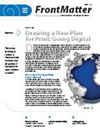重新构建Bofedal管理的牧区实践,以提高安第斯水塔的恢复力
IF 1.8
4区 环境科学与生态学
Q4 ENVIRONMENTAL SCIENCES
引用次数: 5
摘要
在整个安第斯山脉,山区社会生态系统面临的一个关键挑战是为子孙后代确保用水。牧民社区尤其脆弱,因为他们的生计做法往往被忽视或被视为对自然资源保护的威胁。除了气候变化的挑战外,社会经济和政治进程也使牧场退化和可持续水资源管理的驱动因素复杂化。安第斯水塔评估中经常被忽视的系统是bofedales(高海拔泥炭湿地),它对支持山区牧民的生计至关重要。虽然安第斯山脉各地都有“自然”的无氮山地泥炭地和潮湿的草地开发,但我们认为,bofedales是通过几代人的畜牧管理实践创建的社会水文系统。根据对安第斯山脉博联邦的应用研究结果和已发表论文的文献综述,我们提出了博联邦类型学和变化分析的概念重构,其中优先考虑了牧民在安第斯高原地区土地利用和土地覆盖变化的跨学科研究和比较评估中的作用。我们确定了可持续联邦管理面临的关键社会生态挑战,这些挑战与牧民决策有关,并在更广泛的社会经济过程中阐述。将bofedales重新定义为社会水文结构,可以识别可操作的知识,并支持安第斯水塔地区牧民应用的水资源保护实践。如果安第斯牧民被认为是对水塔至关重要的社会水文系统的管理者,而不是被视为对自然资源的威胁,那么联邦保护规划可能会被优先考虑并得到当地的支持。本文章由计算机程序翻译,如有差异,请以英文原文为准。
Reframing Pastoral Practices of Bofedal Management to Increase the Resilience of Andean Water Towers
Across the Andes, a critical challenge for mountain socioecological systems is securing water for future generations. Pastoral communities are especially vulnerable because their livelihood practices are often unseen or perceived as a threat to natural resource conservation. In addition to the challenges of climate change, socioeconomic and political processes complicate the drivers of pasture degradation and sustainable water management. Often overlooked systems in assessments of Andean water towers are bofedales (high-altitude peat wetlands), which are critical to supporting mountain pastoral livelihoods. While “natural” azonal mountain peatland and humid meadow development occurs across the Andes, we posit that bofedales are sociohydrological systems created through pastoral management practices over generations. Drawing on the results of applied research on bofedales across the Andes and a literature review of published papers, we present a conceptual reframing of bofedal typologies and change analysis, which prioritizes the role of pastoralists in interdisciplinary research and comparative assessments of land-use and land-cover change in Andean highland regions. We identified key socioecological challenges to sustainable bofedal management, related to herder decision-making and articulated within broader socioeconomic processes. Reframing bofedales as sociohydrological constructs permits the identification of actionable knowledge and the support of water conservation practices applied by pastoralists across Andean water tower regions. If Andean pastoralists are recognized as stewards of sociohydrological systems that are critical to water towers, rather than perceived as threats to natural resources, bofedal conservation planning may be prioritized and locally supported.
求助全文
通过发布文献求助,成功后即可免费获取论文全文。
去求助
来源期刊
CiteScore
3.10
自引率
18.80%
发文量
36
审稿时长
4.5 months
期刊介绍:
MRD features three peer-reviewed sections: MountainDevelopment, which contains “Transformation Knowledge,” MountainResearch, which contains “Systems Knowledge,” and MountainAgenda, which contains “Target Knowledge.” In addition, the MountainPlatform section offers International Mountain Society members an opportunity to convey information about their mountain initiatives and priorities; and the MountainMedia section presents reviews of recent publications on mountains and mountain development.
Key research and development fields:
-Society and culture-
Policy, politics, and institutions-
Economy-
Bio- and geophysical environment-
Ecosystems and cycles-
Environmental risks-
Resource and land use-
Energy, infrastructure, and services-
Methods and theories-
Regions

 求助内容:
求助内容: 应助结果提醒方式:
应助结果提醒方式:


